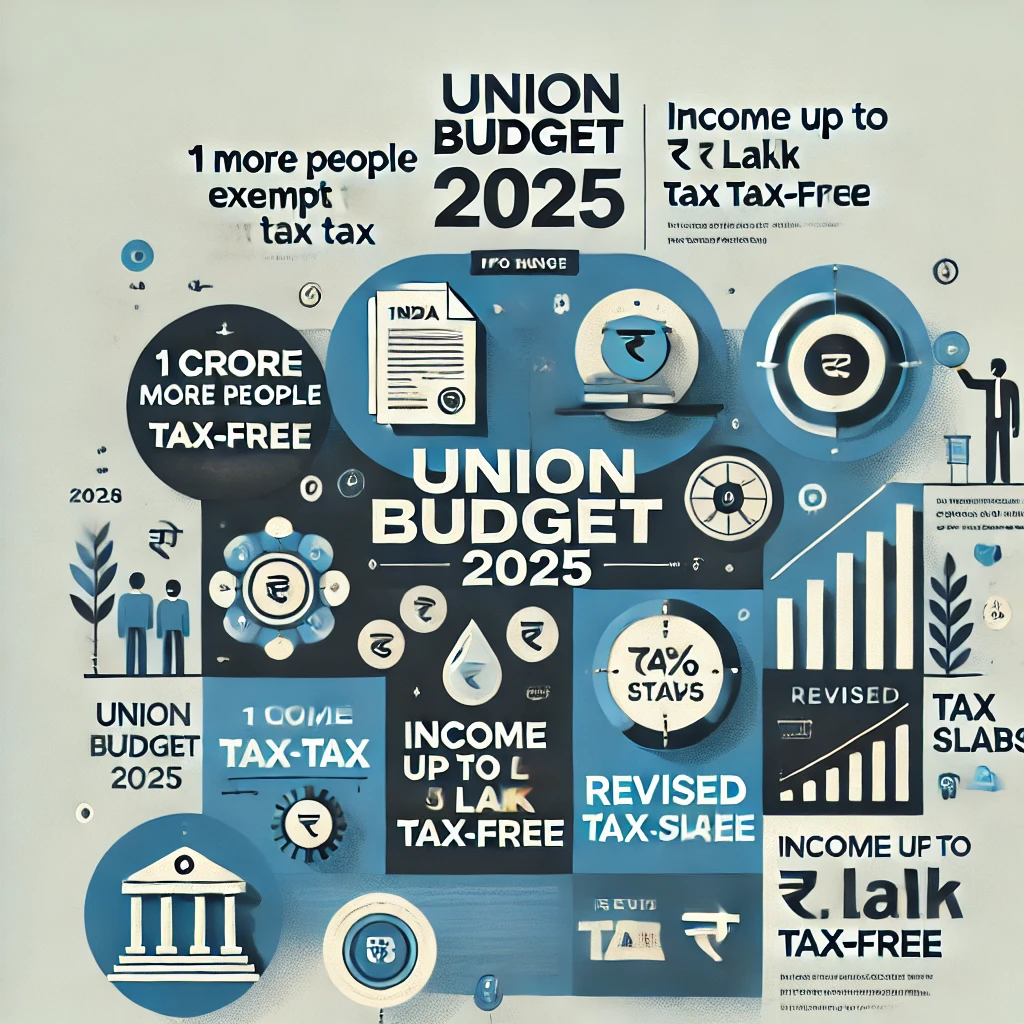
The Union Budget 2025 has brought a wave of relief for the middle class, with Finance Minister Nirmala Sitharaman unveiling key income tax reforms. A significant announcement in this year’s budget is the increase in the tax exemption threshold, ensuring greater financial ease for taxpayers. This step is expected to boost economic growth, increase consumer spending, and provide a sense of financial security to millions of people.
Key Income Tax Reforms in Budget 2025
Under the new tax regime, individuals earning up to ₹12 lakh annually will now be exempt from paying income tax. This move is expected to benefit nearly 1 crore taxpayers across India, bringing significant relief to the middle-income group. Moreover, salaried employees can now avail themselves of a standard deduction of ₹75,000, effectively raising the tax-free income limit to ₹12.75 lakh. This adjustment not only encourages savings but also provides individuals with more disposable income to invest in essential services, real estate, and other economic activities.
The revised tax slabs under the new regime are as follows:
- Income up to ₹4 lakh – No tax
- ₹4 lakh to ₹8 lakh – 5%
- ₹8 lakh to ₹12 lakh – 10%
- ₹12 lakh to ₹16 lakh – 15%
- Above ₹16 lakh – 20%
This progressive tax relief is aimed at boosting disposable income and fostering economic growth, giving middle-class citizens more financial flexibility. The government believes this move will increase purchasing power, fuel investments, and generate overall economic momentum.
Why This Budget Matters
The 2025 budget prioritizes economic stability while providing crucial benefits to salaried professionals, small business owners, and self-employed individuals. By expanding the tax-exempt bracket, the government aims to enhance savings, improve spending power, and drive economic momentum. Additionally, the simplification of tax compliance measures is expected to ease the burden on taxpayers and streamline financial processes for individuals and businesses alike.
Apart from tax reforms, the budget also focuses on several other aspects, including:
- Boosting Infrastructure: Increased allocation to highways, railways, and smart cities projects to enhance connectivity and economic opportunities.
- Support for MSMEs: Special financial packages for Micro, Small, and Medium Enterprises (MSMEs) to encourage entrepreneurship and job creation.
- Healthcare and Education: Higher spending on healthcare facilities and education programs to improve literacy rates and workforce skills.
- Green Energy Initiatives: Investments in renewable energy projects to promote sustainability and combat climate change.
Conclusion
The Union Budget 2025 has laid the foundation for a more inclusive and financially stable India. By providing tax relief to a large section of the population, the government has taken a decisive step towards economic growth and financial well-being. The budget is expected to have a far-reaching impact, positively influencing savings, investments, and overall economic progress.
Stay tuned for more insights and expert analysis on the Union Budget 2025!





